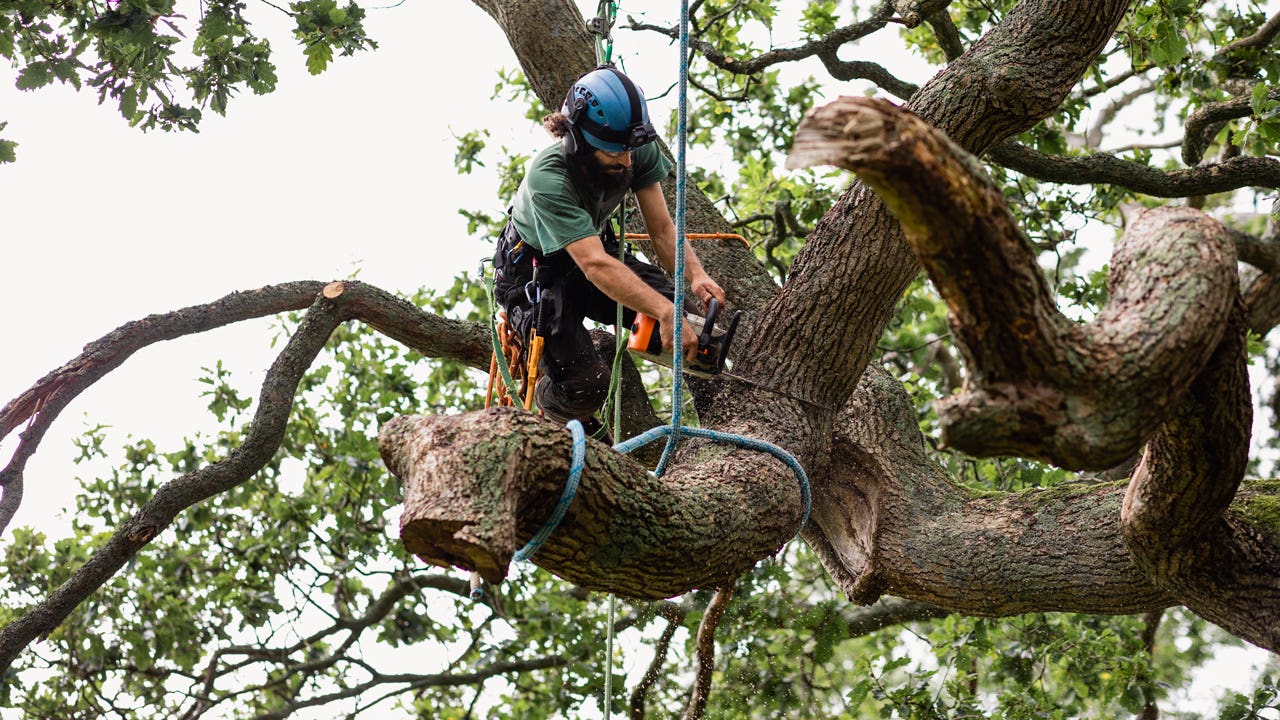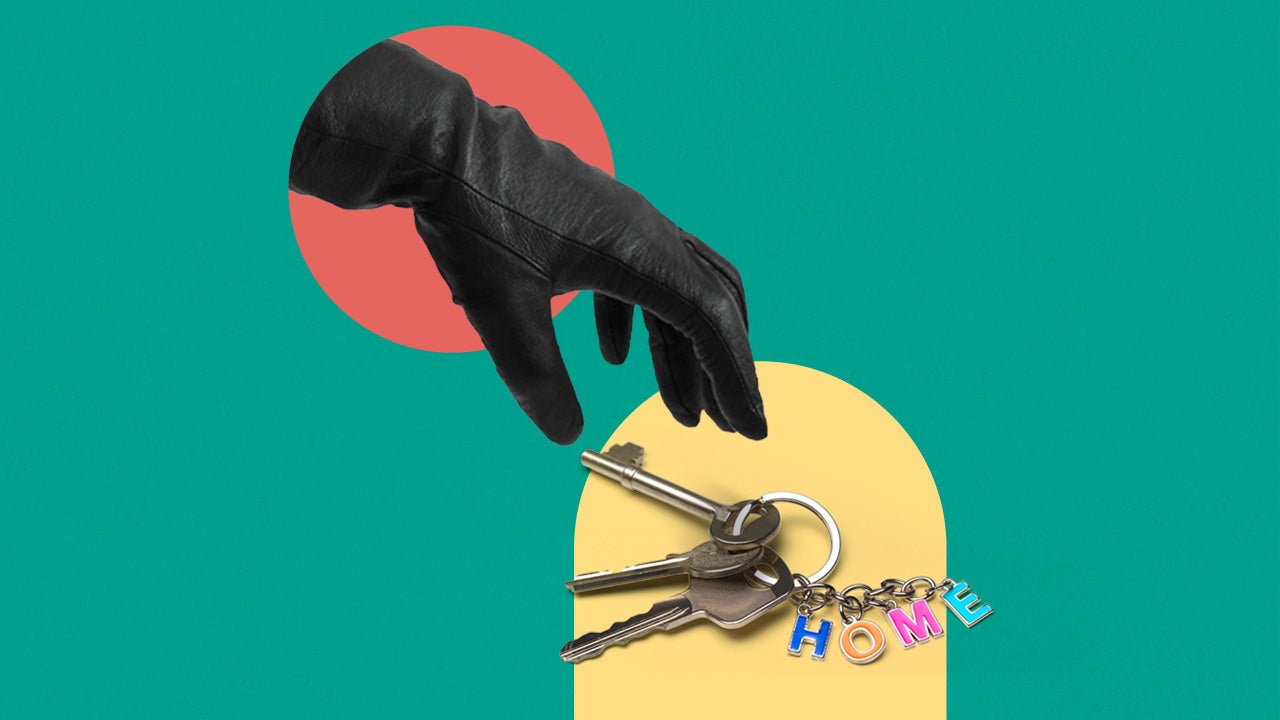Will my homeowners insurance policy cover tree removal?

Key takeaways
- Home insurance may cover tree debris removal in some scenarios, such as after a windstorm or ice storm, but only up to your policy’s coverage limits.
- Your policy likely won’t pay to remove a dead, rotted, overgrown or potentially damaging tree from your property.
- Most insurance policies require homeowners to maintain the trees on their property, which includes removing dead or decaying trees.
- If one of your trees falls onto a neighbor’s home, your neighbor will most likely need to contact their insurance company. Usually, they’ll file the claim and work with their insurance company to remove it.
If you have home insurance and tree removal is on your to-do list, you may wonder if your coverage will pay for taking down the tree. Homeowners insurance covers tree removal sometimes — like if a tree falls due to a covered peril, such as an ice storm or lightning strike. However, homeowners insurance will not cover preventative tree removal in most instances.
Does homeowners insurance cover tree removal?
Home insurance covers tree removal and damage in specific scenarios. Generally, if a tree or limb falls onto your home or a detached structure like a garage or shed or if a tree is blocking your driveway, insurance may cover the removal up to your policy limit. However, the tree must fall on your home, outbuilding or driveway, and it’s only typically covered if the tree has been maintained properly and fell because of one of these reasons:
- A windstorm
- A hail storm
- The weight of ice or snow
- Lightning and a resulting fire
- Other covered perils listed in your policy
Keep in mind, though, that all policies are different. You may want to talk to your agent about the specifics of your policy to better understand what’s covered.
How can trees damage my property?
While having trees on your property can be aesthetically pleasing, trees do come with maintenance costs and can even cause damage to the home in a number of ways, including:
- Damage to roofs: Tree limbs that overhang your home can be knocked down during storms, damaging your roof and even falling into your house.
- Damage to siding and gutters: Limbs can also blow into your siding or repeatedly rub against your home and cause scratching or deeper damage.
- Damage to sidewalks and driveways: Trees and shrubs planted too close to a sidewalk, path or driveway may have roots that will grow under the pavement and push up the surface. Cracks or upheavals can result, leading to hazards for those walking or driving over them.
- Damage to foundations: Trees planted too close to a home can cause foundational cracks if the roots spread beneath the foundation. This can compromise a home’s structural integrity.
- Interior water damage: If a tree limb or an entire tree has fallen onto or against your house during a storm, you may have rain coming inside, which can cause interior water damage. This can also happen if leaves and branches from a tree next to your home clog your gutters.
- Damage to service lines: The roots of your trees can grow into service lines, like your water or gas lines, and cause damage.
- Blocked driveways: If a tree falls across your driveway, you may need to have it removed to get your vehicles out.
When does homeowners insurance not cover tree removal?
Not all tree removal scenarios are covered by standard home insurance. Your home insurance company could deny removal coverage if a tree falls in the following situations:
- During a flood
- During an earthquake
- If the tree is dead
- If the tree is rotted
- If the tree is not well-maintained
Will homeowners insurance cover preventative tree removal?
Further, you may wonder if homeowners insurance covers preventative tree removal. Most often, the answer is no. These scenarios are considered maintenance and are part of the cost of having trees on your property. Tree-related debris or damage after a storm may be covered, though.
If a specific tree is posing a threat — say to a utility line or structure on your property — you can look into hiring a tree removal professional before any damage is caused. The good news is, in many cases, the cost of removal may be less expensive than your home insurance deductible. For instance, say your home insurance deductible is $1,500 and an arborist quotes a medium-sized tree’s removal at $600 to $1,000. Although you would be paying for the removal out of pocket, you could save $500 to $900 in this example. You would also avoid a potential premium increase caused by making a claim on your policy.
Will my home policy cover tree damage that occurs to my neighbor’s house?
Not usually. If a tree on your lot falls onto your neighbor’s home due to a covered peril, your neighbor’s home insurance policy is generally going to help pay for the damage. Your home policy likely doesn’t cover damage to your neighbor’s house, regardless of whose tree falls.
The only way that your policy may kick in is if you are found liable for the damage. If you know that a tree is dead, rotted or otherwise compromised and it poses a threat to your neighbor’s home, but you don’t remove the tree, you may be found negligent. Your neighbor could sue you to prove your negligence and ask for the damages to be paid. But again, in that case, your insurance company may not cover the damages if you have failed to maintain the tree, so you may be stuck paying out of pocket if you are found liable.
How to protect your home from tree damage
When it comes to established trees on your property, regularly inspecting and maintaining them may be your best course of action for preventing damage or injury. This may include:
- Removing dead or overgrown limbs and trees
- Hiring a professional to help trim around power lines on a routine basis
- Monitoring and addressing root systems that could interfere with underground pipes or wiring
When planting new trees on your property, you may want to choose a species that is weather-tolerant for your area. You can also position new trees strategically so they are less likely to interfere with structures or systems already established on the property. For instance, you might plant trees 15 to 20 feet away from your home or install root barriers so the roots don’t damage the foundation.
How much does it cost to remove a tree?
The cost to remove a tree depends on several factors, but you could expect to pay anywhere from $350 up to $5,000, depending on the size and structure of the tree and its location. Shorter trees are easier to remove and may cost less. However, tall trees — typically any tree over 50 feet — might cost significantly more to remove. Tree removal companies will usually measure the height and diameter of the tree in question and provide you with a quote before beginning the project.
Keep in mind that other factors can affect the cost of tree removal, too. These could include:
- Accessibility: Expect to pay more if the tree is in a hard-to-reach spot or close to power or utility lines. You might also pay more if the workers have to clear brush or plants near the base of the tree.
- Location: Tree removal costs can vary by region, and tree removal companies often have a service area they work within. If you live outside of a service area, you might face steeper costs. Consider asking a neighbor if they also need tree removal service so you can share the costs of hiring a company.
- Health of the tree: Dead trees might cost more because there can be danger from the brittle branches. Plus, if the dead tree has already fallen, most companies won’t charge as much to simply haul it away. However, diseased trees could be more expensive to remove if the company has to prevent the disease from spreading to healthy trees nearby.
- Number of trunks: Trees with multiple trunks or a wide diameter usually cost more because they are more difficult to remove.
- Emergency removal: You might pay the most for tree removal if it’s an emergency, like after a storm. This is because tree removal might be in high demand in your area. It’s also more likely that if it’s an emergency removal, the tree in question is positioned poorly — on a power line, on your roof or in traffic, for instance — which can drive up removal costs.
Don’t forget that you may also be charged for stump removal or wood chipping once the tree is down. If desired, some tree removal companies might offer to chop the wood into firewood for you for a fee.
Frequently asked questions
Why we ask for feedback Your feedback helps us improve our content and services. It takes less than a minute to complete.
Your responses are anonymous and will only be used for improving our website.
You may also like

Does homeowners insurance cover space heaters?

Does homeowners insurance cover theft?

Does homeowners insurance cover water damage?

Does homeowners insurance cover termites?


